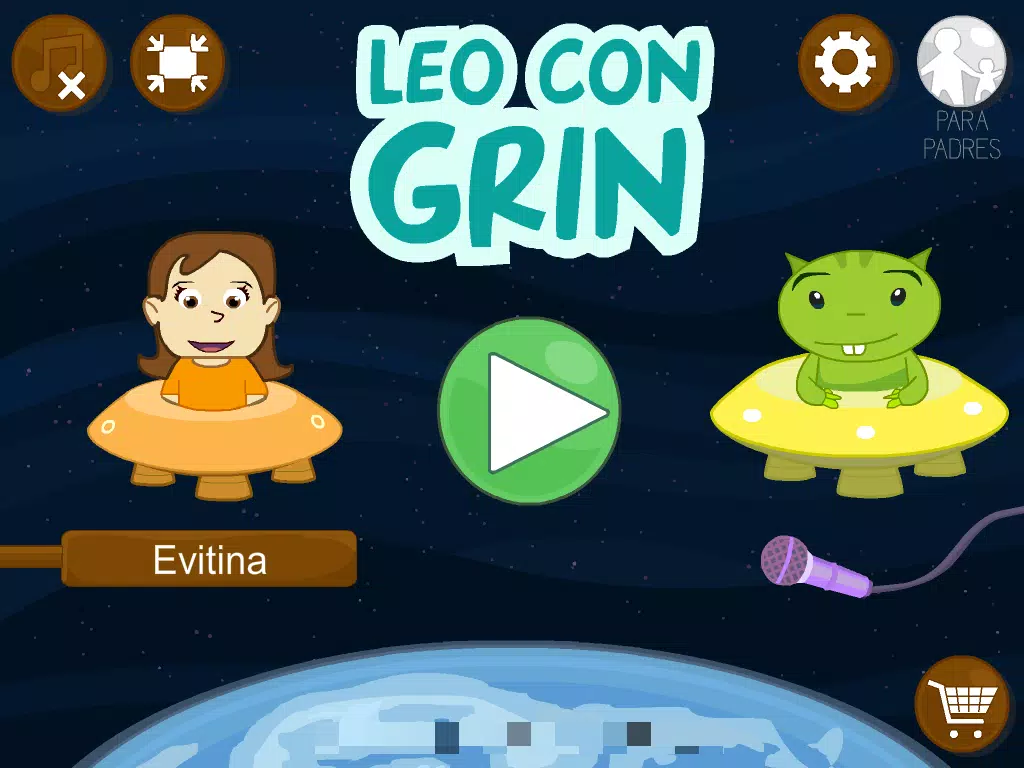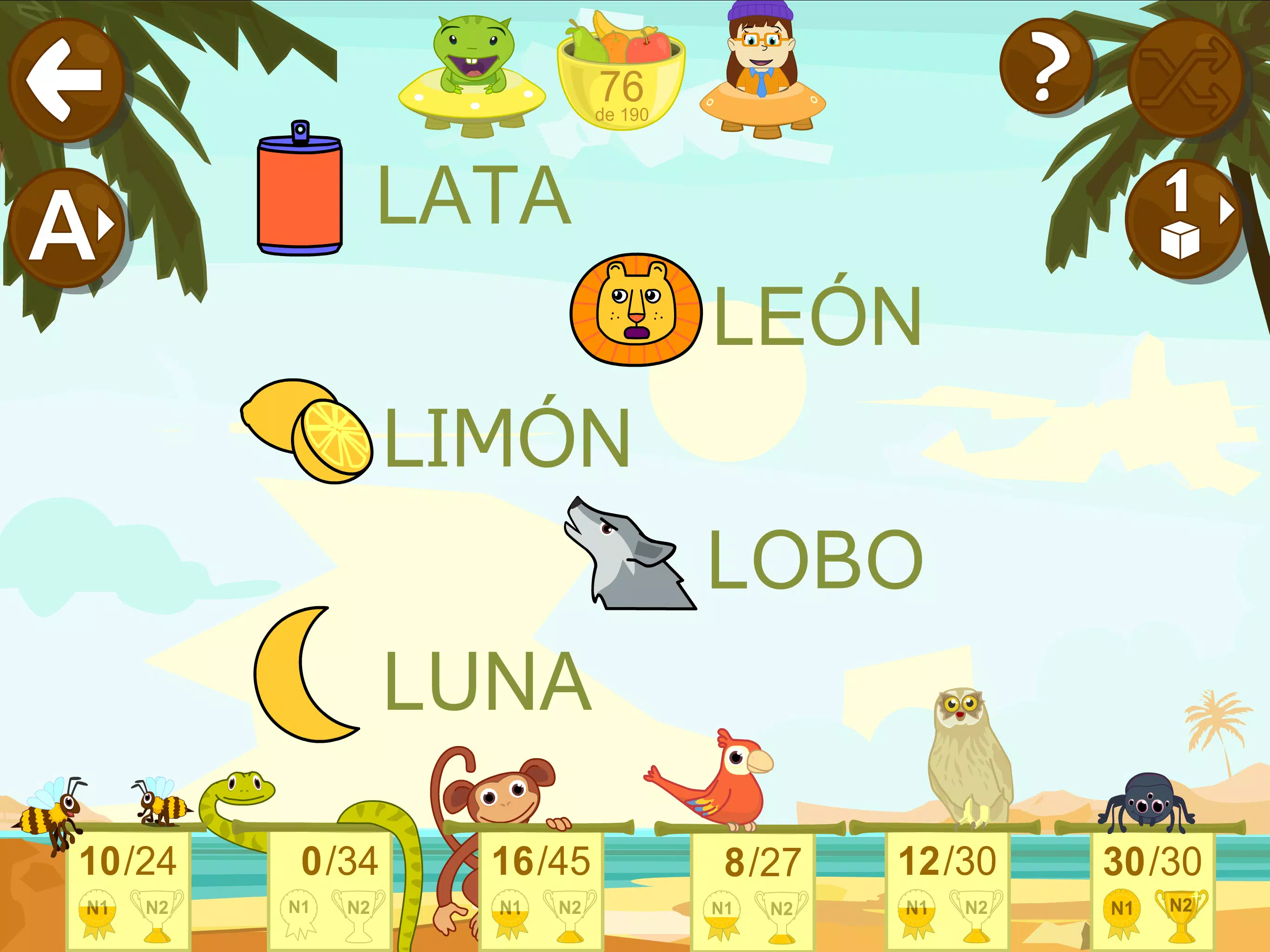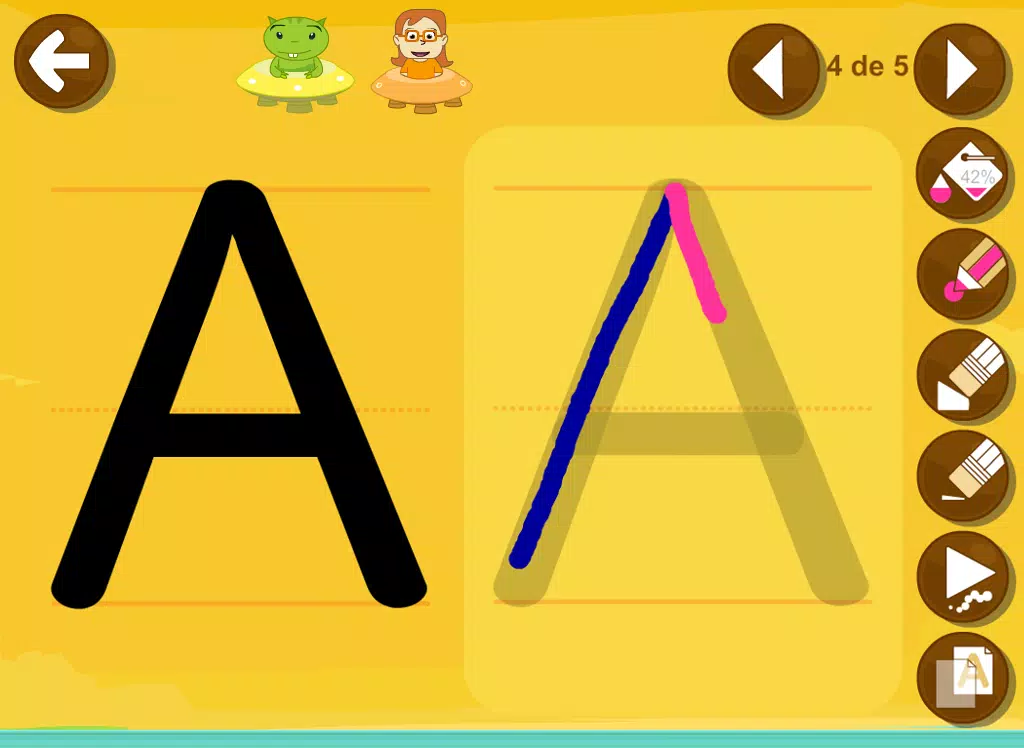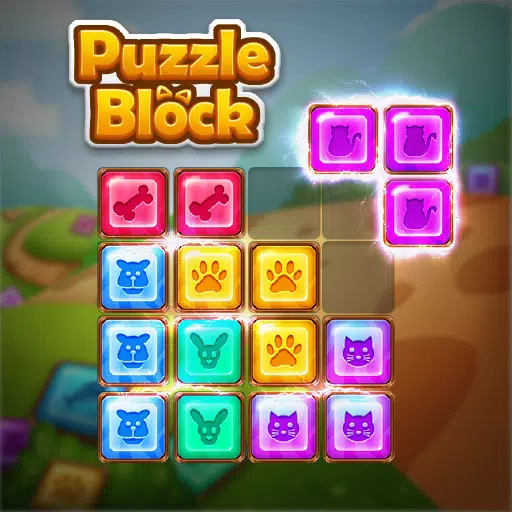Learning to read Spanish and mastering the alphabet is a crucial skill that lays the foundation for a child's educational journey and future success. It's essential to start this learning process early, ideally during preschool and the initial years of elementary school, as it significantly impacts their academic and professional life.
Children today are digital natives, naturally drawn to computers and tablets. Leveraging this affinity can enhance their learning experience, reinforcing what they're already studying in school.
Method
Our method, "Learn to Read Spanish with Phonics," is tailored for children aged 3 to 6 or 7, and even adults looking to refine their pronunciation. The program is structured into a section for tracing letters and 30 lessons, beginning with vowels and progressing through consonants and digraphs such as L, M, S, T, P, N, D, F, H, C, Q, CH, G, GUE, R, -rr-, B, V, J, GE, GUE, Y, Z, CE, LL, X, K.
Each lesson includes 11 engaging games, available at two difficulty levels. This approach is perfect for parents and educators seeking to practice and reinforce the initial syllables and words in Spanish. Encourage the child to listen and engage with the exercises; full comprehension isn't necessary at this stage.
Reading acquisition is a gradual process that may span over a year. We recommend daily practice sessions, revisiting previously learned material, and adjusting the exercises to suit the child's pace. It's crucial that the learning experience feels like a game.
Levels
All games feature two difficulty levels, which can be adjusted at any time. Children can progress at their own pace, with the flexibility to pause and resume later. As they complete games, they earn fruits as rewards.
The first level is designed for children as young as three, and sometimes even younger with assistance from parents or educators. At this stage, games can be solved with the help of instructions. The second level presents more complexity, encouraging children to solve them independently while ensuring the learning remains enjoyable.
As caregivers, it's important to match the difficulty level to the child's abilities without pressuring them to rush through the stages.
Abilities
Our program enhances several key skills:
- Visual and auditory memorization
- Identification and association
- Discrimination
- Understanding
- Literacy
Options
On the home screen, users can:
- Enable or disable background music
- Choose to play in full screen
Within the Tikis menus, additional options include:
- Changing the font to uppercase, lowercase, or cursive handwriting
- Enabling or disabling automatic activity, which switches to another game after a set number of exercises
- Shuffling the syllables for varied practice
Achievements
The program allows for up to three profiles (avatars) for different children, tracking each child's progress, correct and incorrect answers, and representing their achievements as a percentage in the form of fruits.
Fruits serve as a fun motivator for continued engagement. When children collect fruits in their basket, they can click on it to share them with little aliens.
For a detailed overview of progress, users can press the reports button on the Tikis screen.
Games
NEW THE ALPHABET:
Children can listen and learn to write each letter of the alphabet, syllables, and some words in various modes: trace, copy, and free mode. They can choose between three types of letters: uppercase, lowercase, and handwriting.
For each lesson, there are 11 games designed to engage and educate:
- DOLPHIN: Introduction to the word and its components.
- BALLOONS: Identifying letters within a syllable.
- CLOUDS: Tracing the shape of each syllable.
- CRABS: Forming syllables from individual letters.
- BUTTERFLIES: Recognizing syllables.
- BEES: Identifying the initial syllable of words.
- SNAKE: Constructing words using syllables.
- MONKEYS: Building words from letters.
- PARROTS: Recognizing and reading words.
- MOUSE: Understanding the order of words and reading sentences.
- SNAILS: Forming sentences from words.
For any feedback or technical inquiries, please contact us at [email protected].



















